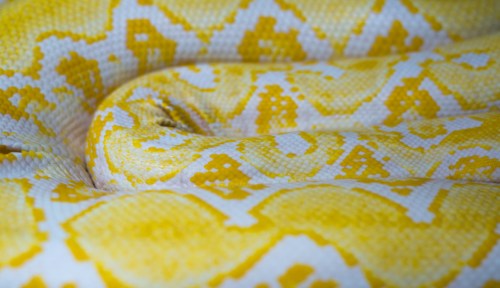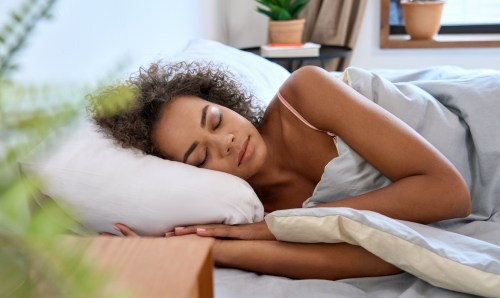Our editors independently select these products. Making a purchase through our links may earn Well+Good a commission
When I became “an adult,” I was relatively prepared to be tired all the time and inexplicably super into getting socks as a present—but I was not ready for how expensive it is to furnish a home. Pillows were particularly shocking, so for years I slept on either hand-me-downs from family (you can ignore the yellow age stains when you put a pillowcase on!) or super cheap pillows. But pillows are one of those things that you don’t think make much of a difference…until you use a really amazing one and realize what you’ve been missing. Now, my boyfriend and I fight over the Purple Harmony Pillow ($179) on our bed—as does W+G commerce writer Francesca Krempa and her boyfriend. (Yes, the pillow is that good.) Sure, you should definitely figure out how to clean pillows to lengthen their lifespan, but even expensive ones don’t last forever. Depending on a pillow’s filling, its shelf-life (bed life?) may be shorter than you think, especially if you were planning on keeping yours forever.
Experts in This Article
sleep expert and clinical psychologist
Michelle Bowler is the head of merchandising at Allswell.
“Generally speaking, most pillows last for one to two years, though this definitely depends on a few different factors,” says Michelle Bowler, head of merchandising at Allswell. “There is an array of fill options available for pillows. No one is best—all have advantages and drawbacks, depending on your needs and preferences,” says sleep expert Michael Breus, PhD, Purple’s Chief Sleep Advisor. So how long do pillows last? I asked Bowler and Dr. Breus to break down the most common pillow filling types, and how often to replace them below.
Common pillow filling types
Memory foam
“Composed of a flexible polyurethane foam, memory foam pillows are long-lasting and super moldable, making it a great pillow for a variety of people,” says Bowler. “There is the traditional block memory foam pillow as well as shredded memory foam that is great for adjustable support.” In other words, memory foam pillows contour to the lines of your head, neck, and shoulders by responding to your weight and body heat, says Dr. Breus. He notes that memory foam does retain heat, which can lead to discomfort and sweating, but high-quality memory foam pillows often have ventilation built in to offset this.
Down
“These pillows are light and soft—if you like a soft place to rest your head at night, you may like a down pillow,” says Dr. Breus. He adds that many people worry about allergies or sensitivity to down feathers, and while there are people who have hard allergies, a lot of the time it comes down to lower-quality down that hasn’t been cleaned properly. “The dirt that remains on the down, rather than the animal fiber itself, can cause allergy and discomfort,” he explains. “You can look for hypoallergenic down, often called “hypodown,” which is a rigorously cleaned blend of pure down and a natural substance called syriaca, which helps bolster the allergy-free properties of the down, and increases the longevity of the pillow.”
At this point, down pillows are usually made from goose or duck fibers; goose tends to be softer and more expensive than duck. The pillows are made with different combos of down, feathers, and other fillings, and even if a pillow says “pure down” or “all down” it may still contain feathers and other fill, Dr. Breus cautions. “Good quality down pillows are expensive, but worth it if this is the type of pillow you prefer,” he says.
Down alternative
“Made of synthetic polyester microfibers, down alternative filling is hypoallergenic and cheaper than your average down feather pillow,” says Bowler. However, Dr. Breus notes that they will need to be replaced more frequently than down pillows.
Polyester fill
“Polyester fill pillows are a relatively inexpensive pillow choice, compared to other pillow types,” says Dr. Breus. “They tend to be medium-to-soft, though less soft than down. They will flatten with time, and typically need replacing more frequently than other types of pillows.” Bowler adds that this popular pillow filling is washing machine-friendly.
Wool
According to Dr. Breus, wool pillows are naturally hypoallergenic and resistant to mold and dust mites. They can also help regulate your temperature as you sleep, since they wick away moisture from your head and neck. These pillows tend to be pretty firm, but they are one of the longer-lasting filling types. “If you want the benefits of wool without all the firmness, look for alpaca wool, rather than cashmere fibers,” he advises.
Cotton
This is one of the most widely available (and widely used) pillow filling types, says Bowler. “Similar to wool in many ways, cotton pillows are also naturally hypoallergenic and resistant to dust mites and mold,” says Dr. Breus, adding that they are a smart choice for people with allergies and chemical sensitivities.
Latex
“Latex pillows tend to be more firm than down, but still very comfortable,” says Dr. Breus. “These pillows hold their shape. This isn’t the kind of pillow you squish into just the position you like.” He notes that these pillows, which are made of rubber, are often designed for extra support to the head and neck, or to restrict movement during sleep. They are also resistant to mold and dust mites.
How often to replace your pillow
“As a general guideline, I tell people if it’s a foam-based pillow, you should replace it every three years,” says Dr. Breus. “If it is anything else, every 18 months or so. And if you wake up with a stiff neck more than three mornings a week, it’s time to replace your pillow.”
Other tell-tale signs it’s time for a new pillow include: stiffness in your upper back or traps, the pillow looks like a saddlebag when you hang it over your arm, or if it starts to smell. “Because your pillow is something your face comes into contact with nightly, don’t hesitate to replace it if it feels anything but clean,” says Bowler.
How to extend the life of your pillow
You can help keep your pillow fresh by using a pillow protector or choosing a pillow with a removable and washable cover. Bowler recommends an anti-microbial cover like the Allswell’s Reversible Pillow ($48), which is also editor-approved. “Pay attention to the washing instructions and be sure to care for your pillow as recommended. Not all materials are machine washable, and it’s important to launder it correctly,” Bowler says. She adds that you can even vacuum your pillow occasionally to remove any dust. “It’s an easy way to keep your pillow looking and feeling in great condition,” she adds.
Sign Up for Our Daily Newsletter
Get all the latest in wellness, trends, food, fitness, beauty, and more delivered right to your inbox.
Got it, you've been added to our email list.











